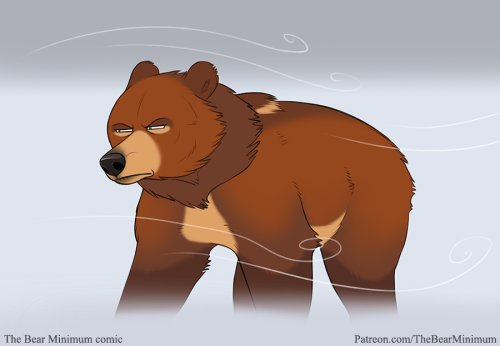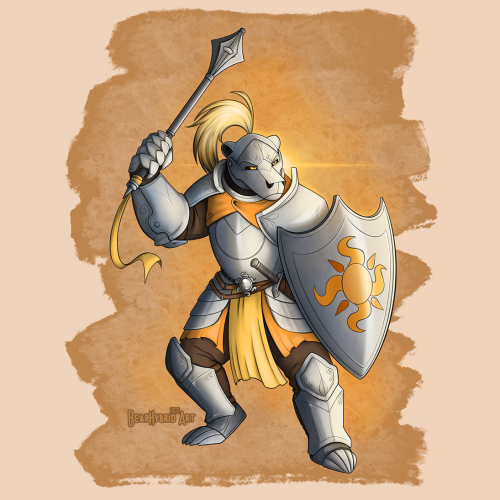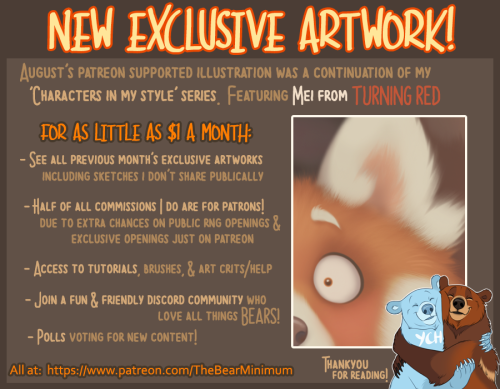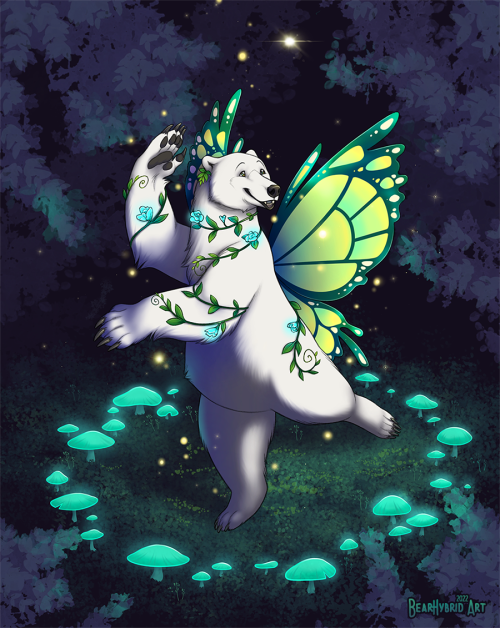#notacomic
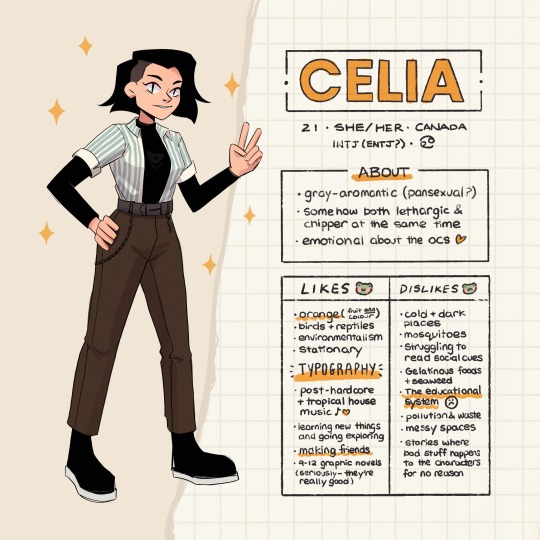
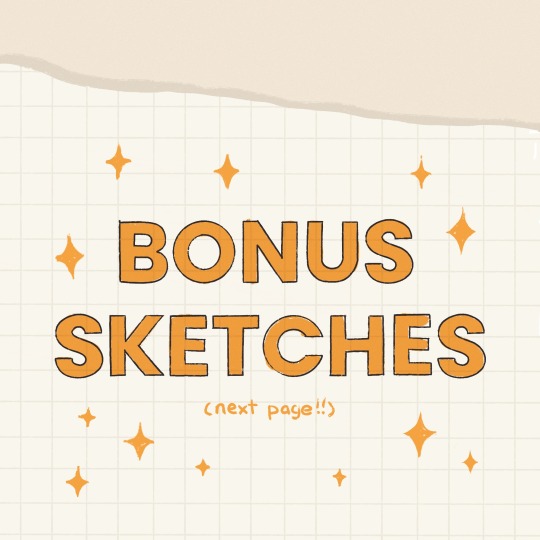
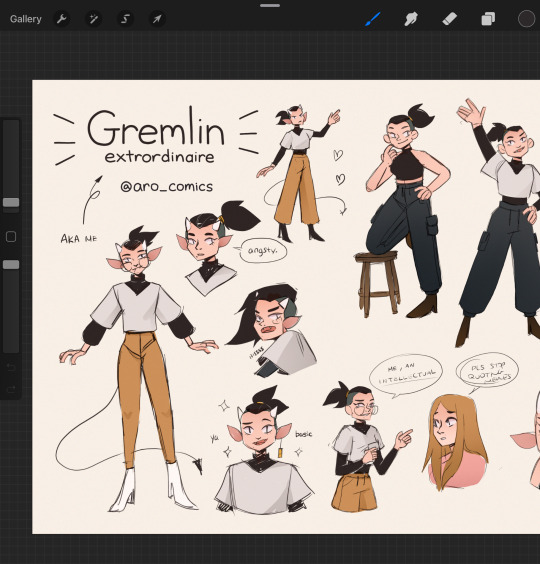
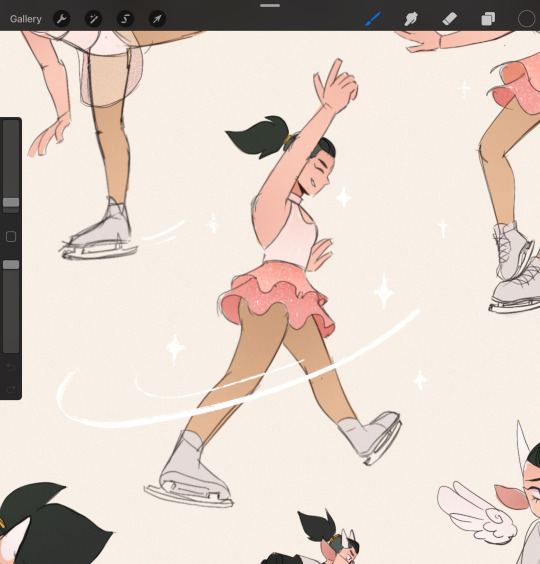

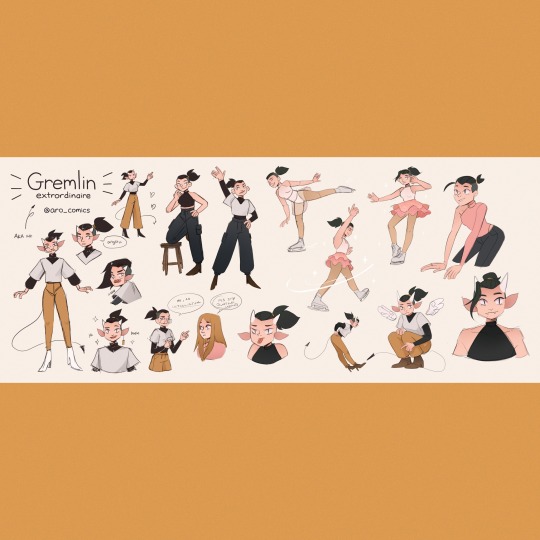
As promised, the #meettheartist for this week I may have fallen a little behind in school and this is the most I can offer for now
I don’t really have much to say except that I stress draw myself as a demon quite often sometimes all a girl wants is pointy teeth and horns I hope y’all are doing well (those of you also doing exams/wrapping up school stuff, good luck!!) I’ll be back next week with our regularly scheduled programming!!! Jealousy comic up ahead
[Image Description:
Title slide:
A layout in the typical “meet the artist” drawing format, where a drawing of the artist is paired with information about them.
On the left is a full body drawing of Celia throwing up a peace sign. She is wearing a black turtleneck, a striped dress shirt on top, a pair of high-waisted brown work pants with black boots. In the background are small yellow sparkles.
On the right, drawn on top of what appears to be a piece of torn grid paper is some basic information about Celia. Please note that I will, for the sake of concision, summarize the information I have written in the drawing in point form:
She is 21 years old, uses she/her pronouns, is from Canada, is an INTJ (although in brackets, she has written ENTJ with a question mark), and has the astrological sign Cancer.
About Celia: Gray aromantic (in brackets, pansexual followed with a question mark), somehow both lethargic and chipper at the same time, emotional about the “OCs” (original characters).
Likes: Orange (fruit AND colour), birds and reptiles, environmentalism, stationary, typography (written in big letters with an underline), post hardcore and tropical house music, learning new things and going exploring, making friends, and 9-12 graphic novels (seriously, they’re really good)
Dislikes: Cold + Dark places, mosquitoes, struggling to read social cues, gelatinous foods + seaweed, the educational system, pollution and waste, messy spaces, stories where bad stuff happens to the characters for no reason
Slide 2:
Another drawing of a torn piece of paper. Written in large letters filled in with orange are the words: “Bonus Sketches (next page)”
Slide 3:
A page full of sketches of Celia, some which depict her as a demon girl with pointy teeth, ears, and horns. In the top left corner is written “Gremlin Extrodinaire”, followed by her username. A little arrow points to the text, written “A K A me”.
Some of the sketches depict her standing around, others are headshots with various expressions like amused, neutral, or even one where she is hissing like a small gremlin. She is wearing various outfits, a combination of a turtleneck and white oversized t-shirt with various sand coloured pants is common.
Slide 4:
More sketches of Celia. Some show her as a demon again, one of which has her sticking her tongue out, others have little cartoon wings drawn behind her. Other sketches show her figure skating, and yet another shows her with a pink, asymmetrical bodysuit with one sleeve and a turtleneck.
Slide 5:
Close up of one sketch, where she is spinning in a figure skating move. Her outfit is a pink turtleneck top with a chest cutout near the top, and a pink frilly tiered skirt and the typical beige tights that figure skaters wear.
Slide 6:
Another close up of other sketches of her as a demon. One where she is crouching and looks apprehensive, another where she seems to be aggravated and is exclaiming with a cartoonish exaggeration.
Slide 7:
A view of the whole page of sketches.]
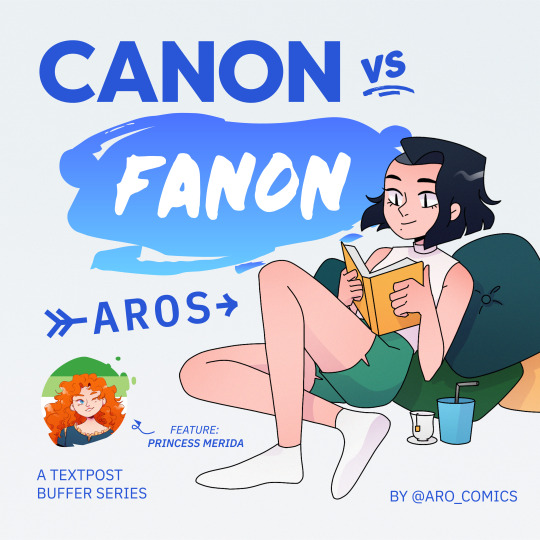

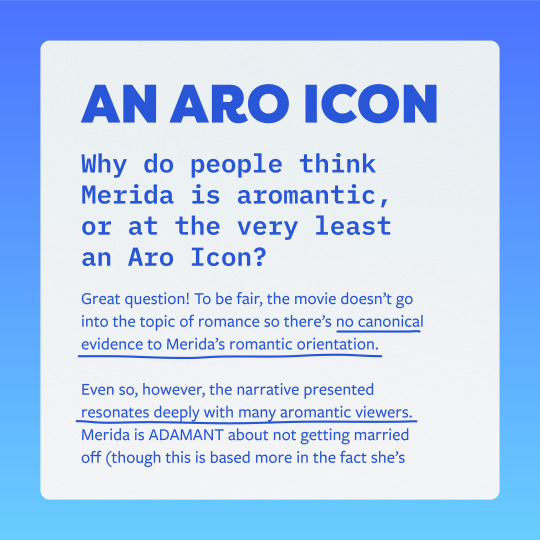

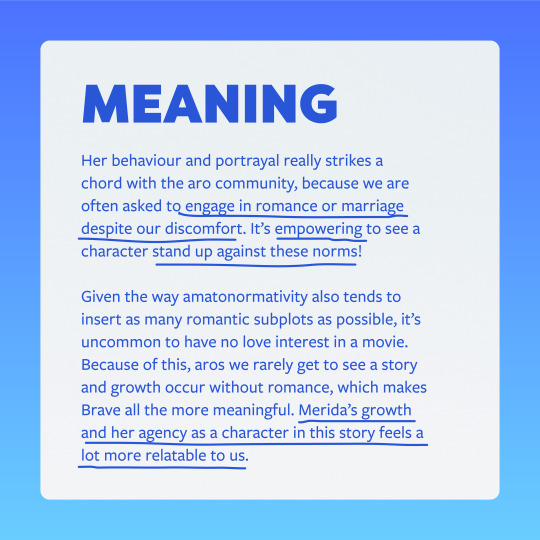

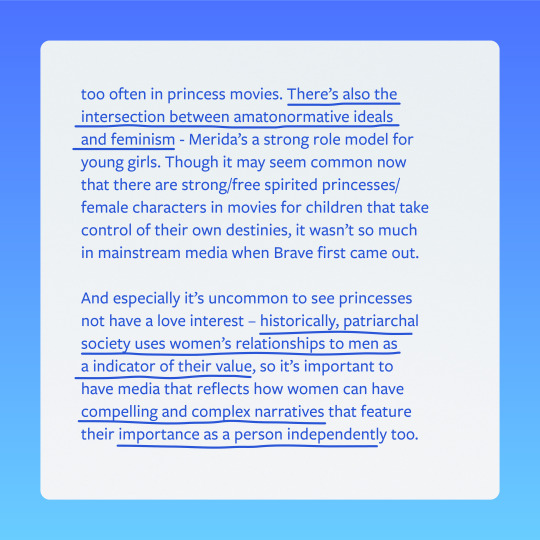






I PRESENT: A NEW ANALYSIS POST ON OUR ARCHERY QUEEN, PRINCESS MERIDA OF DUNBROCH!!! ✨
Haha okay, but in all seriousness, I’m glad I managed to wrap up the loose ends with this post and get this out to y’all (sorry about the lateness, I’m fine but lately the combination of work and getting ready for fourth year has been pretty exhausting).
Obviously, as we all know by now, I love a good media analysis, and especially when you look at things from an Aro Lens – and it always fascinates me when I find a character that’s widely regarded by the community as an icon, if not perceived as arospec in some way! Merida is no exception, and I loved having the chance to delve into her character and what (I believe) she represents for our community. Personally, I didn’t watched Brave as a kid, but watching it as an adult and being able to see all those points of tension at the beginning of the movie surrounding marriage – and especially how Merida’s dad described her as wanting to remain single forever and ride off into the sunset shooting arrows – was really relatable, especially as a young woman who’s kind of at that age where people “expect” you to start dating/thinking about things like long-term romantic relationships
Anyways, I feel like I’ve covered most of what I want to say in the actual textpost for once , so I’ll just sign off with a note that I will be sharing some extra art and stickers tomorrow.
ARTIST’S NOTE: Since this is tumblr (and I can throw in more than 10 slides at once XD) I’ve just shared the rest of the post here! Link to the stickers.
As always, feel free to let me know what you think! Do you see Merida as Arospec or an Icon for the Aro community?
[Image Description:
Slide 1: Title slide. Text says: “Canon Vs Fanon Aros, feature: Princess Merida.” The title shows a drawing of Celia sitting and reading a book, relaxing. Bottom text says “a textpost buffer series” and by “aro comics (the Instagram username)”
Slide 2: Note: For the following slides, information is quite text heavy. As a result, the original script written will be pasted here with additions of any visual notes if needed.
Slide Title: Intro
About: Princess Merida of DunBroch
Canon vs. Fanon – Circle Fanon
Basic facts:
Personality: Bold, courageous, energetic, freespirited, and a bit stubborn and rebellious
Loves archery, sword fighting, riding her horse Angus, and exploring!
A princess that rebels against traditional training and etiquette, the plot of the movie follows our protagonist on repairing her relationship with her mother after a falling out and an accidental curse.
Slides 3-4:
Slide Title: An Aro Icon
Why is do people think Merida is aromantic, or at the very least an Aro Icon?
Great question! To be fair, the movie doesn’t go into the topic of romance so there’s no canonical evidence to Merida’s romantic orientation.
Even so, however, the narrative presented resonates deeply with many aromantic viewers. Merida is ADAMANT about not getting married off (though this is based more in the fact she’s SIXTEEN and doesn’t know any of these boys, which is very understandable) and makes a point of it by rebelling against the archery contest her mother set up to pick her suitor.
Screenshot: A defiant Merida speaks in front of the gathered clans at the Highland Games. She announces: “I am Merida, first born descendant of clan Dunbroch. And I’ll be shooting for my own hand!”
NOTE: This is significant because the games are meant for the first born descendants of other clans to compete for her hand. However, since she has chosen archery as the competitive sport, and she is technically the first born of her own clan, this is a clever moment where she is able to use this rule to rebel and attempt to maintain her freedom!
Slide 5:
Slide title: Meaning
Her behaviour and portrayal really strikes a chord with the aro community, because we are often asked to engage in romance or marriage despite our discomfort. It’s empowering to see a character stand up against these norms!
Given the way amatonormativity also tends to insert as many romantic subplots as possible, it’s uncommon to have no love interest in a movie. Because of this, aros we rarely get to see a story and growth occur without romance, which makes Brave all the more meaningful. Merida’s growth and her agency as a character in this story feels a lot more relatable to us.
Slides 6-7:
(Continued from previous)
It’s because of these elements that many people will consider Merida an aro icon, if not aromantic herself (although this is more of a headcanon)! Also … she’s literally good at archery, which in and of itself is kind of perfect for an aro icon.
Also, Merida’s a Pretty Cool Character for other reasons too!
The focus on familial love in this movie is very heartwarming, and it’s not something you see too often in princess movies. There’s also the intersection between amatonormative ideals and feminism - Merida’s a strong role model for young girls. Though it may seem common now that there are strong/free spirited princesses/female characters in movies for children that take control of their own destinies, it wasn’t so much in mainstream media when Brave first came out.
And especially it’s uncommon to see princesses not have a love interest – historically, patriarchal society uses women’s relationships to men as a indicator of their value, so it’s important to have media that reflects how women can have compelling and complex narratives that feature their importance as a person independently too.
Slides 8-9:
Slide Title: Conclusion
Why is Merida’s existence important to aromantic people and beyond?
In short, it breaks romance norms and also gives aro people a fictional character to relate to! But before we wrap up, I wanted to address the discussion/discourse around “projection” of identity onto Merida – as some people have pointed out before, why is it that if a woman doesn’t show interest in a man in the context of a story should they be interpreted as gay or aspec? This does tie into issues of sexism for women, as mentioned before. But this being said, as an aspec woman I would say that it’s perfectly valid and good for LGBTQ+ to interpret characters to be like them/to have more diversity in interpretation, because we’re so far lacking in representation. It’s a good point to make/ask why we may view a female character this way, but ultimately its understandable, and not harmful/engaging in sexism, to imagine a character that we relate to be like us.
Overall, Merida’s storyline and character was quite groundbreaking regardless of whether or not she’s aromantic, and she’s VERY cool! And personally, I’m glad to have her as an icon for our community!
Slide 10:
Sources:
1: Screenshot from Original Brave Movie, sourced from an online clip:
https://www.youtube.com/watch?v=sWbxhKTbTkA
Although I don’t quote any other direct sources for this textpost, I used the following sources for additional research and would encourage you to read them if you’d like to learn more!
Slide 11: A page full of sketches of Merida. The text: “Some Merida Sketches (Yes I’m still messing around with my art style)”. The sketches include a headshot of Merida smiling and winking, another half-body shot with her nocking an arrow, and a third chibi of her with her bow. All three sketches are coloured and shaded, albeit in different styles.
Slide 12: A redraw of a key scene from the Brave movie. Merida is holding her bow as she defiantly exclaims: “And I’ll be shooting for my own hand!”
Slide 13: A graphic showing cutout versions of the two stickers made from the previous sketches (the Chibi and the Headshot). The title: “Free Stickers! (Check the Carrd)”, and below a note reads “Free for personal use only”]
Okay I know that again, this might be me being too sensitive since I’ve made about a bajillion disclaimers under my most recent comic - but after some recent comments/some feedback I’ve seen, I really want to make it clear that I am AWARE that it’s somewhat problematic that professional environments provide people pressure to dress up (in fact, the essay does cover this subject). The comic was only meant to poke fun at the fact that the constant comments that I got about wanting to dress up for love were wrong, and that really if my parents wanted me to dress differently (which I understand, is still problematic - and for the record they didn’t force me to dress any certain way), they could have gone about it another way. I’m very career focused and I understand that isn’t for everyone, that capitalism is not good, and so forth. I respect and understand other people’s (rightfully negative) relationships with work and capitalism.
But I have been pursuing the line of work I am now, and have been dreaming of a career in what I am currently pursuing since I was 11, in some ways. I’ve always been passionate about environmentalism and working as a creative professional, so having the chance to do either and hopefully both means a lot to me. I know that work isn’t everything, for a lot of people, and I think that’s a very healthy and good attitude to have in maintaining a life balance! But for me, being able to be a part of projects that I … hope I might be invited to work on, one day, would make me beyond happy. I would be able to spend most of my day doing things I hope are both meaningful and altruistic, and will address major environmental problems that exist, and I personally think that’s worth working towards outside of the context of money.
So I’d really appreciate it if the intent of the comic wasn’t misconstrued. It’s fine if you don’t like it or think it’s that funny, I literally do agree it’s funny only on the surface and has a lot deeper of a conversation tied to the subject. Overall, I respect if you have a different opinion, but please don’t write comic off as just some kind of blind celebration of capitalism. There’s a lot more context that I really tried to put both in the background of the comic (since the original networking event that I went to was actually for climate jobs), and also in the comments and literally a follow-up essay. Please don’t ignore the additional context that I wrote. Thank you.
(sorry y’all, didn’t know where to post them, and I am Vain so I insist that you see them)
(Also I have still drawn myself as a little demon because it’s FUN)

[Image ID: A number of drawings of Celia in her usual outfits. On the top are her usual clothes, which are either a black turtleneck long sleeved shirt or equivalent black turtleneck sweater, black bike shorts, and bold dorito coloured toucan themed socks.
In the middle row, left to right: Brown velvet balloon sleeve top and black mid-length skirt; a black work dress; a yellow and white sweater with balloon sleeves (I designed it! And my grandma knitted it!) with secondhand levis
Bottom row: Left, a black lace bra and sheer overshirt with small blue and white flower details; Right, a black lace bra with another sheer overshirt. This time the shirt is a metallic grey, and has comically large collar and front tie]

[Image ID: two drawings of Celia, but as a demon with sharp long horns, pointy ears, and white wings. On the left she is wearing a white spaghetti strap top, orange oversized jacket and purple pants. On the right she is wearing an outfit with the same colour scheme, an orange and white sweater and purple jean skirt]

[Image ID: Celia with an outfit in the same colour scheme as above (but she isn’t drawn as a demon this time). There is a combination of a purple sparkly cutout sweater (it ends above the chest), an orange crop top underneath. She is wearing white pants with decorative straps at the sides.
She says: “Alright, hear me out -” while an arrow with the note “an actual gremlin” is pointed to her]

[Image ID: Unfinished sketches of Celia (again as a demon). She is wearing a dark grey shirt, paired with high waisted black technical pants and ankle boots. On the left is a bust sketch (see seems to want to say something), on the right is a full body sketch as she poses half sitting.]

[Image ID: A collection of the previous sketches but in their original lineart. On the page two are two additional unfinished sketches, one a picutre of Celia as a human with an oversized sheer t-shirt top and high waisted skirt, the other a drawing of Celia as a demon wearing a simple black crop top and pants combo in a crouched pose]
[Note: This post is a part of a series analyzing self-expression, fashion, aromanticism, and how they interact with other parts of identity. For full context please read the whole thing!]
My personal Aro Fashion Sense Speculations:
And now, we get to the most fun part. My personal, somewhat uneducated speculations! (Half-joking). Okay, but seriously - take everything I’m about to say with a grain of salt. This is no more than a little guesswork probably coupled with my own biases on fashion, and really I’m just throwing this out here to start a discussion. Feel free to let me know your own thoughts on where all of this might go!
First, with the influence of digital spaces on small screens, and algorithms on fashion and design, the nerd in me expects that specifically bright, flat green colours, potentially with bold silhouettes may do well within Aro Fashion of this century (flat colour blocking is overall popular for these reasons).
Another direction that aro fashion could develop is to play off the idea of connection with nature. I think this fits well with the ever-popular cottagecore aesthetic (which I do enjoy, although more casually/don’t really incorporate within my wardrobe), and perhaps many aros already like this aesthetic! I know at least two of my aro friends do.
The other way that this passion for nature could be interpreted is adopting an aesthetic more fitting of a scientist or a naturalist. Also, since that aesthetic tends to be less romanticized or seen as “attractive” (science overall has associations with a life devoted to career, which could be thought of in the stereotypical sense as a romance-free lifestyle), this aesthetic would also work well with the idea of subverting expectations within amatonormativity.
I’ve also noticed that there are popular archetypes that aros tend to resonate with - the archer in relation to the greek goddess artemis, for example. Personally, I’m not too familiar with the details surrounding this particular archetype, but I believe it may be possible that development in aro aesthetics can also be inspired by this figure.
And of course, all of this is not to forget symbols and signifiers within our community that already exist, such as the white aro ring,and the general prevalence of green in representing the community overall.
Conclusion
So … in conclusion, there’s a lot to talk about in terms of fashion, self-expression, and different factors that can provide other forms of pressure into presenting a certain way. A lot of these are Not Good because they reflect the ever present problems of society, patriarchal and other discriminatory beliefs. These should be acknowledged, and part of the discussion surrounding aromanticism and self-expression moving forwards.
But at the same time, as I have stated before in a different comic - these are exciting times to be Aro. For the first time on a major scale, our community is able to interact and communicate and keep records of developments, and it’s exciting to think about where all of this may go, and what subcultures and culturally significant means of expression may continue to emerge.
Finally, I hope you all aren’t tired of me re-iterating this anymore, but please. Wear what you want, and please don’t feel you need to dress a certain way. Obviously there are times where you have to do something to be safe (so prioritize your well-being over all else), but I think that those factors aside, it’s so important to express yourself how you feel comfortable.
I hope you’ve all found this essay interesting! I’m always happy to hear feedback, so feel free to let me know what you think and your personal experiences with any of the subjects I’ve described here!
[Note: This post is a part of a series analyzing self-expression, fashion, aromanticism, and how they interact with other parts of identity. For full context please read the whole thing!]
Aromanticism and Fashion?
Now that we have gone through LGBTQ+ History with fashion, and the importance of self expression - I think we’re in a good place with all this context to discuss how aromanticism and fashion can intersect. (and again, as a disclaimer, all of this is purely speculative!).
Personally, I think there may be a few philosophies on how Aromanticism and Fashion may interact. You can look at it a few different ways, either considering the influence amatonormativity may have on our methods of dress, but also the context in which Aromantic communities are forming (online).
On the influence of Amatonormativity
Up until this point I’ve been side-stepping the consideration of amatonormativity – but it does impact self-expression, I think, and it’s worth discussing it’s relation to aromanticism.
I had a discussion with one of my aroace friends about the idea of wanting to avoid “attention” in the romantic and/or sexual sense growing up. There is an inherent tie-in with wanting to appear desirable (as shown in the beginning of the comic, and also reinforced through many pieces of popular media), with romantic outcomes. In both of our experiences, I believe it made the idea of being seen as conforming to beauty norms an uncomfortable activity.
And looking back to lesbian fashion history too, we can see this subversion of heteronormative expectation is tied into a lot of their community’s means of dress. Which leads me to wonder - will we also see this with an emerging Aromantic sense of fashion? How could this impact clothing choice, and general expression as it relates to an amatonormative society?
I want to note that personally, outside of professional contexts, I like to dress femininely in a subversive and “alternative” way. I LOVE the idea of being hyperfeminine as a performance, being a living, breathing, work of art, while simultaneously creating an aesthetic that would not consider “attractive” in an amatonormative context. And another aroace friend has confirmed feeling this way with me too! She mentioned she likes to dress in a way that will make women go “wow, we love this outfit” but at the same time cause *conservative straight old men* go “what are you wearing” (to paraphrase our conversation).
I think some good examples of this from my personal experience would be the following:
1. I love aggressive, graphic liner - generally makeup is thought of as something that feminizes the face, something that softens. But I also like to use it to create the angles and shapes that adorn my face, something abstract for the sake of being beautiful. Like mentioned before, I don’t want to appear romantically attractive to anyone, and I think that for me, at least, this is a part of using femininity to subvert these expectations.
2. I love ethereal-looking, avant-garde sheer dresses, not in the sense that they could be romanticized, but in the way they again make me feel detached from the idea of beauty for the sake of appealing to anyone else. Instead, for me it feels like beauty as a wild, untameable form of nature and being.
But … maybe I should mention the unconventional tastes are partially tied to the fact I spend a lot of time in creative spaces because of my degree, and overall I am exposed to more diverse ranges of self-expression to begin with! Either way, though, I am curious what other aros have to say, so feel free to let me know your experiences with this. I’d love to provide an update with thoughts from other aros!
Forming Community Online and its Possible Impacts
The online nature of the development of Aro Culture leads me to wonder if this medium of interaction will influence the development of our fashion, much like how it influences the development of fashion overall. For example, with tiktok, the app is often credited for its major influence on modern fashion trends (and leading to the emergence of microtrends).
Most visual designs are being affected by the way social media algorithms work too. The “allegria style” created by facebook, otherwise known as the “flat gangly limbed drawing style beloved by tech companies”, has exploded in popularity. Regardless of how one might feel about the widespread adoption of this style of illustration, it’s clear that it has significant advantages that have led to its popularity, one of which is its ability to be “consumed” or visually understood at high speed due to its graphic nature and simple design. Basically, when people look at things on their phones, and they’re scrolling quickly, they’re more likely to understand what they see and interact with what they see if it’s easy to visually “read”. And I truly believe that this is influencing most forms of design, including fashion (which subsequently, will influence aro fashion). If you’d like to learn more about this subject, sources 14,15, and 16 provide more insight into how social media algorithms have influenced design and visual culture at large.
I think another factor to consider here is the effect of seeing the whole world at once - having the influence of all different media, visuals, and pop culture at the same time has created a very unique environment for development. As one example, the wider aspec communities have developed with the existence of our flags (which are purple and green centered for ace and aro respectively). This would be knowledge that wouldn’t be so easily spread through the whole community in a pre-internet era, and I personally (THIS IS ONLY MY THEORY) feel this is part of the reason there is a far stronger connection to these colours within aspec culture. It’s something that unifies us and was one of our first introductions to the community (since most of us probably looked up the definition of aromantic, or asexual, online), and I think for this reason these colours hold special significance and are present in a lot of of our means of self expression and communication with other members of our community.
Obviously, the formation of symbols and ways of self-identification will occur anyway (many symbols exist for other members of the LGBTQ+ community too), but I do think being online has a particular influence on the ways community symbols are communicated, and create a different context in where these cultural symbols take shape.
[Note from Author: For Part 6, click here!]
[Note: This post is a part of a series analyzing self-expression, fashion, aromanticism, and how they interact with other parts of identity. For full context please read the whole thing!]
How I Feel Now (About Fashion)
Er …. I guess it’s complicated. Obviously, I have mixed feelings on the factors that lead to this, as they are symptoms of a deeper problem of discrimination in society. Things are far from perfect, and it’s hard to feel 100% positive about these changes because of it.
But, on the flip side, I don’t personally mind the changes I’ve made to my presentation. It hasn’t been upsetting for me at all, and I’ve only benefited from it in my personal life along with being able to learn and grow through researching fashion.
First, through familiarizing myself with how professional wear works, and later on fashion in general, I was able to unlearn some internalized misogyny instilled in a lot of people my age. Being able to better appreciate women, femininity, and all the things I never got to enjoy growing up is fun. Fashion history has been fascinating to learn about (shoutout to all the video essayists on Youtube), and just getting to research and understand things I once believed were “frivolous” has opened my eyes to a much bigger part of the world. There is so much to gain from understanding different fields and subcultures that exist.
Second, I’ve been able to apply my learning to other aspects of design, and I think understanding more about fashion has helped me understand more about design in general. Not to be cliche, but a lot of things are interconnected, and knowledge from different creative fields can cross pollinate and provide new inspiration! I’ve found my work is becoming more creative and unique, and in particular it’s not only fun to design wardrobes for characters, but it also becomes a way to add to their overall design and communicate more about their interests and personality.
Third, although I disagree with the sentiment that being feminine automatically makes one more confident, through learning more about makeup and self-care, I think I’ve been more conscious about taking care of myself (even if not from an appearance perspective). I’m the kind of person that needs to shower at LEAST once a day to feel comfortable, and overall putting more effort into self-care habits has improved my mental state as well.
Finally, getting to enjoy self expression is another benefit! I think a big part of why I didn’t enjoy fashion as a kid was because of early 2000s trends which were popular when I was young (nothing against them, but a lot of them don’t suit my personal tastes). Since I’ve researched and now understand fashion is so much more than just what is necessarily popular in the mainstream at any given point in time, as an adult I’m having a lot of fun picking out outfits that match my personal tastes. I think it’s really cool how by treating your body as a canvas, in a sense, you can be able to communicate a specific vibe, appearance, without even having to say a word. Really, it’s just like any other form of art.
And on the note of self-expression, as we discuss the relevance of fashion to Aromanticism we should examine how Fashion relates to the LGBTQ+ Community.
Fashion and its Importance to the LGBTQ+ Community as a Whole
Fashion has always been significant because of the capacity it grants for self-expression. Historically, this significance has been important within the LGBTQ+ community. As usual, I won’t go into too much detail, because this is not my area of expertise and I doubt that my surface level research would be an accurate or complete picture of this rich and complex piece of history, but - I think a verybrief primer will help provide some context and ideas to reference as I move into the more speculative portion of this essay.
We all know that there are certain fashion subcultures within the LGBTQ+ community, which have both historical roots and served specific purposes. Early on (referencing the times circa the 1700s in Europe here), fashion has been a form of self-identification and communication. As source 11 details, gay men, have had historical tie ins with cross-dressing or effeminate methods of dress to signal to other members of the community.
And as I mentioned before: Masculinity is historically associated with being Sapphic. As an example, a recent post from @dressingdykes on Instagram (full article at source 13 at the end of this document) describes how “lesbian feminist clothing was worn with an ideal of androgyny in mind.” Emphasis was put on using fashion to undermine restrictive gender norms used to control women - by choosing to dress in an androgynous way, it would “eliminate differences between men and women, where men hold a socially superior position.
Though no one group or fashion subculture can speak for all members of the group (and the article acknowledges this subculture was far from adopted by all Lesbians), examples like these do highlight the ways an LGBTQ+ identity within a patriarchal and heteronormative society can have influence on the self-expression.
[Note from Author: For Part 5, click here!]
[Note: This post is a part of a series analyzing self-expression, fashion, aromanticism, and how they interact with other parts of identity. For full context please read the whole thing!]
My Experiences
As a conclusion to all these factors covered so far, I want to discuss how they’ve all intersected outside of only my aromanticism, to influence my personal experiences and current presentation.
To begin, I think it’s important to have a little context about my identity, in general - I am a cis, pansexual, Chinese Canadian woman, who is most likely neurodivergent. All of these things have affected my life at different points in time, though not every factor I actively realized until I was an adult.
When I was a child, most people told me I was a “tomboy”, and by highschool I was very butch with a short haircut and expressly masculine clothing choices (which included clothing made “for men”). I think that this was in part because of a lot of things, but mainly because I am queer. There is a historical precedent of queer woman adopting masculine forms of self-expression, and I think that this form of presentation is a natural part of my identity for me. It was an aesthetic I liked! It’s one that I still like! I sometimes still dress this way. But … it was also something that caused me to be treated as “less mature”, at least in combination with my (probable) neurodivergence and my ethnicity.
As much as I’d like to separate how each of these individual factors contributed to infantilization, I don’t think it’d be possible or meaningful: I can’t separate my experiences into individual parts because I am a whole person that is all of these things, at once. All of these factors influenced how people saw me, and all I can say is that people have talked to me differently for most of my life. I feel like it was because people assumed I wouldn’t understand a lot of things, or that I wouldn’t want to participate or be a “good fit” in a lot of social events, and overall I was interacted with in a way that implied subtly I was childish or sheltered or just “””different””” (code word for: probably neurodivergent, but nobody wanted to address it).
So when I hit that moment of realization, in the comic, when I was thinking of updating my wardrobe to be more “professional”, I initially considered just buying some more dress shirts and pants as I would have for most of my childhood. But as I reflected on my life so far, and how everyone (especially my family) had treated me differently in a GOOD way when I first bought one dress …
It hit me, slowly, that I was being discriminated against for a lot of things most of my life. Not horribly, not explicitly, and definitely not life-threateningly, but seriously enough that it made me reconsider how I could choose to present myself in the future. Especially since as I continued to present in a way that was both feminine and cognizant of fashion trends (so I wouldn’t say it’s exclusively tied to presenting femininely, I do think that part of it is related to the fact I was buying slightly higher quality and better designed clothes overall),I could feel that people as a whole have started to be nicer to me, invite me to more events, and overall treat me like the age I actually am.
I think it’s clear by now that some of my changes to self expression were based on pressure to prepare for more professional settings (and being tired of being seen as childish overall). For me, struggling less with being infantilized, and having peace of mind that I will have fewer obstacles in professional environments (since my career means a lot to me), will bring enough relief for me to better enjoy the other parts of my life. And that makes adopting an additional form of self expression that is feminine, alongside other forms of self expression, something positive.
And as another disclaimer! I’m NOT saying that you can’t choose to dress in a way that deviates from cishet, binary gendered norms, if you want to succeed personally or professionally. I’ve seen a non-binary classmate of mine choose to do this, and they’re very well received by their peers and employers alike. It really depends on your circumstances and how you feel. Self expression is something really personal, and ultimately it is something that you should determine based on your personal comfort and happiness.
[Note from Author: For Part 4, click here!]
[Note: This post is a part of a series analyzing self-expression, fashion, aromanticism, and how they interact with other parts of identity. For full context please read the whole thing!]
Outside of Amatonormativity Alone: Sexism, Homophobia (and/or Transphobia), Racism, Ableism, and Other Factors That can Impact Self Expression
My comic was originally meant to be a light hearted joke. I’d always been told I’d want to dress up one day, be pretty and feminine once I fell in love with a boy (BLEGH). I was so certain that I would never do that, and now … here we are. I put lots of effort into my appearance, present feminine, all in the hopes I’ll impress a very special someone - a potential employer at a networking event. I think there’s a certain irony to all of this, and I do find it funny that I managed to both be wrong and completely subvert amatonormative stereotypes!
But having the chance to think about the whole situation, I realize now that my changes in presentation reflect far more. The pressure I felt to dress differently are still influenced by fundamental forms of discrimination in society, and I would be remiss to not address these inherent factors that were tied with my experiences alongside my aromanticism. So in this section, I will briefly cover some of these factors and summarize how they can influence people’s self expression as a whole, before discussing my own experiences and how these factors all intersect.
Sexism
The pressure on women In This Society to uphold arbitrary norms is ever present and often harmful, and while I wish I had the time to discuss the impacts of every influence the patriarchy has on personal expression, to even try to cover a fraction of it would be impractical at best for this essay. Instead, since the original comic focuses on professionalism and presentation, this is what I will talk about here.
Beauty standards are a specific manifestation of sexism that have a deep impact on how people perceive women. It’s a complicated subject that’s also tied with factors like capitalism, white supremacy, classism, and more, but to summarize the main sentiment: Women are expected to be beautiful. Or at least, conform to the expectations of “feminine” “beauty” as ascribed by the culture at large.
They also tend to be considered exclusively as this idea that “women need to be beautiful to secure their romantic prospects, which subsequently determines their worth as human beings. The problematic implications of this sentiment have been called out time and time again (and rightfully so), however there is an often overlooked second problematic element to beauty standards, as stated in the quote below:
“Beauty standards are the individual qualifications women are expected to meet in order to embody the “feminine beauty ideal” and thus, succeed personally and professionally”
- Jessica DeFino. (Source 1)
… To succeed personally, andprofessionally.
The “Ugly Duckling Transformation” by Mina Le (Source 2) is a great video essay that covers the topic of conforming to beauty standards through the common “glow up” trope present in many (female focused) films from the early 2000s.
“In most of these movies, the [main character] is a nice person, but is bullied or ignored because of her looks.”
Mina Le, (timestamp 4:02-4:06)
Generally, by whatever plot device necessary, the ugly duckling will adopt a new “improved” presentation that includes makeup, a new haircut, and a new wardrobe. While it is not inherently problematic for a woman to be shown changing to embrace more feminine traits, there are a few problems with how the outcomes of these transformations are always depicted and what they imply. For starters, this transformation is shown to be the key that grants the protagonist her wishes and gives her confidence and better treatment by her peers. What this is essentially saying is that women are also expected to follow beauty standards to be treated well in general, not only in a romantic context, and deviation from these norms leads to the consequences of being ostracized.
The other problematic element of how these transformations are portrayed are the fact that generally the ONLY kind of change that is depicted in popular media is one in the more feminine direction. Shanspeare, another video essayist on YouTube, investigates this phenomenon in more detail in “the tomboy figure, gender expression, and the media that portrays them” (Source 4). In this video, Shaniya explains that “tomboy” characters are only ever portrayed as children - which doesn’t make any sense at face value, considering that there ARE plenty of masculine adult women in real life. But through the course of the video (and I would highly recommend giving it a watch! It is very good), it becomes evident that the “maturity” aspect of coming of age movies inherently tie the idea of growth with “learning” to become more feminine. Because of the prevalence of these storylines (as few mainstream plots will celebrate a woman becoming more masculine and embracing gender nonconformity) it becomes clear that femininity is fundamentally associated with maturity. It also implies that masculinity in women is not only not preferred, it is unacceptable to be considered mature. Both of these sentiments are ones that should be questioned, too.
Overall, I think it is clear that these physical presentation expectations, even if not as restrictive as historical dress codes for women have been, are still inherently sexist (not to mention harmful by also influencing people to have poor self image and subsequent mental health disorders). Nobody should have to dress in conformity with gender norms to be considered “acceptable”, not only desirable, which leads us to the second part of this section.
Homophobia (and/or Transphobia)
So what happens when women don’t adhere to social expectations of femininity? (Or in general, someone chooses to present in a way that challenges the gender binary and their AGAB, but for the sake of simplicity I will discuss it from my particular lens as a cis woman who is pansexual).
There are a lot of nuances, of course, to whether it’s right that straying from femininity as a woman (or someone assumed to be a woman) will automatically get read a certain way by society. But like it or not, right or not, if you look butch many people WILL see you as either gay, (or trans-masculine, which either way is not a cishet woman). This is tied to the fact that masculinity is something historically associated with being WLW (something we will discuss later).
This association of breaking gender norms in methods of dress with being perceived as a member of the LGBTQ+ community has an influence on how people may choose to express themselves, because LGBTQ+ discrimination is very real, and it can be very dangerous in many parts of the world.
I think it’s very easy to write off claims in particular that women are pressured into dressing femininely when it is safer to do so in your area; but I really want to remind everyone that not everyone has the luxury of presenting in a gender non-conforming way. This pressure to conform does exist in many parts of the world, and can be lethal when challenged.
And even if you’re not in an extremely anti-LGBTQ+ environment/places that are considered “progressive” (like Canada), there are still numerous microagressions/non-lethal forms of discrimination that are just as widespread. According to Statistics Canada in 2019:
Close to half (47%) of students at Canadian postsecondary institutions witnessed or experienced discrimination on the basis of gender, gender identity or sexual orientation (including actual or perceived gender, gender identity or sexual orientation).
Fundamentally this additional pressure that exists when one chooses to deviate from gender norms is one that can not be ignored in the conversation when it comes to how people may choose to express themselves visually, and I believe the impacts that this factor has and how it interacts with the other factors discussed should be considered.
Neurodivergence (In general):
In general, beauty standards/expectations for how a “mature” adult should dress can often include clothing that creates sensory issues for many autistic people. A thread on the National Austistic Forum (Source 6) contains a discussion where different austistic people describe their struggles with formal dress codes and the discomfort of being forced to wear stiff/restrictive clothing, especially when these dress codes have no practical purpose for the work they perform. If you’re interested in learning more on this subject, the Autisticats also has a thread on how school dress codes specifically can be harmful to Autistic people (Source 7).
In addition to potentially dressing differently (which as we have already covered can be a point of contention in one’s perception and reception by society as a whole), neurodivergence is another layer of identity that tends to be infantilized. Eden from the Autsticats has detailed their experiences with this in source 5.
Both of these factors can provide a degree of influence on how people choose to express themselves and/or how they may be perceived by society, and are important facets of a diverse and thoughtful exploration of the ways self-expression can be impacted by identity.
Also, while on this topic, I just want to take a chance to highlight the fact that we should question what is considered “appropriate”, especially “professionally appropriate”, because the “traditional” definitions of these have historically been used to discriminate against minorities. Much of what gets defined as “unprofessional” or otherwise “inappropriate” has racist implications - as an example, there is a history of black hairstyles being subjected to discriminatory regulation. Other sources I have provided at the end of this document (8and9) list examples of these instances.
Racism (being Chinese, specifically in this case):
For this section, I won’t be going into much depth at all, because I actually have a more detailed comic on this subject lined up.
So basically, if you were not aware, East Asian (EA) people tend to be infantilized and viewed as more childish (Source 10). In particular, unless an EA woman is super outgoing and promiscuous (the “Asian Bad Girl” stereotype, see Source 10), IN MY OPINION AND EXPERIENCE it’s easy to be type casted as the other end of the spectrum: the quiet, boring nerd. On top of this too, I’ve had experiences with talking to other EA/SEA people - where they themselves would repeatedly tell me that “Asians are just less mature”, something about it being a “cultural thing” (Yeah … I don’t know either. Maybe it’s internalized racism?).
Either way, being so easily perceived as immature (considering everything discussed so far) is also tied to conformity to beauty standards and other factors such as sexism and homophobia, which I believe makes for a complex intersection of identity.
[Note from Author: For Part 3, click here!]
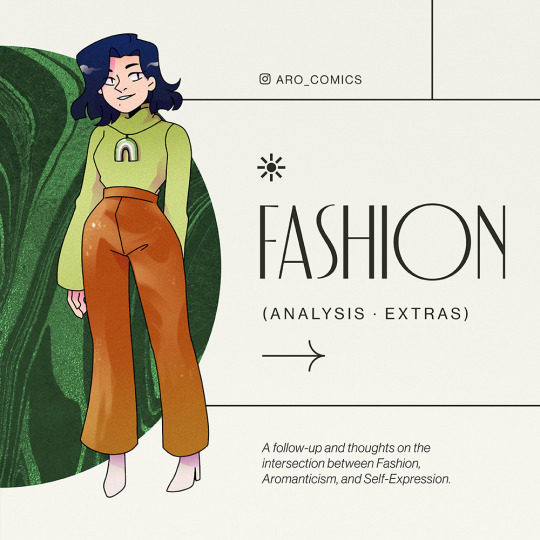
[Image ID: Title: Fashion (Analysis and Extras). A follow up and thoughts on the intersection between fashion, aromanticism, and Self-Expression.
Image: A graphic layout with a muted tan background. Celia is drawn in a soft, slightly oversized green turtleneck paired with brown, wide legged pants and white blocky heels. A big chunky necklace shaped like a rainbow is painted with the aro flag colours]
Introduction, Art, and Disclaimers
Hello! If you’re reading this, I’m guessing you clicked through the ‘read more’ because you were curious about my thoughts on how the subjects I mentioned in my previous comic could be analyzed, and as a whole how Aromanticism as an LGBTQ+ identity, Fashion, and Self Expression intersect.
So, Tl;Dr, you’re a nerd, like me ;p
Okay, seriously though. This is gonna be a long one, and I will be splitting this analysis into parts (just because it is SO long, I’m sorry y’all!) so if you’re just here for the art, I’ve dumped some outfit drawings below first, and I’ll follow up with a disclaimer before jumping into the actual analysis!
Outfits:
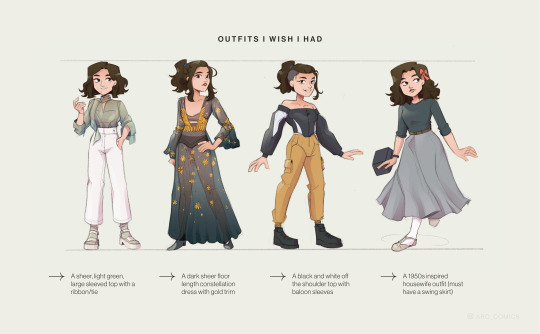
[Image ID: Title: “Outfits I wish I had”. Four drawings of Celia. From left to right:
Outfit 1: A sheer green top, with billowing open sleeves that end at the elbows. It has a long sash at the neck which she has styled as a scarf. She is wearing white straight legged pants and chunky white shoes.
Outfit 2: A dark sheer celestial themed, floor length dress, with a deep v-neck lined with gold embroidery. Constellations are embroidered down the length of the skirt.
Outfit 3: A futuristic off the shoulder black and white top with wide sleeves that close in at the wrists, paired with yellow cargo pants and heavy black boots.
Outfit 4: A 1950s housewife inspired outfit. A darker grey top paired with a long lighter slate grey circle skirt, white socks and cream coloured flats. Celia is also wearing a red ribbon in her hair.]

[Image ID: Title: “Outfits I actually have” Four drawings of Celia. From left to right:
Outfit 1: A black turtleneck top with a straight legged black pant. The pants have a ribbon sash, which Celia has tied off to the side.
Outfit 2: A black dress shirt paired grey dress pants. Celia is wearing black dress shoes as well.
Outfit 3: A black sheer oversized shirt with a black lace bra and black shorts, paired with black ankle boots.
Outfit 4: A white turtleneck and blue apron skirt combination, with grey knee high socks]
Introduction (Continued)
So, as promised, I will be going into more depth about the same subjects I touched upon in my original comic description. This analysis is meant to be more of a draft (… actually, if we’re going to be very honest this originally was a full 16-page monstrosity, before I realized that it would need much more work to refine it into something cohesive); a working document and discussion open to change and input. As a general disclaimer, I have no background in fashion (although I have studied design history in multiple uni courses), nor am I an expert in LGBTQ+ History. I’m just passionate about aromanticism, and wanted to at least capture my thoughts because I find this interesting and I believe the intersection of these various topics is worth discussing.
I have done my best to find sources which help support this analysis and can provide more information if you’d like to learn more, and these will be available at the end of the text. If you’re more well versed about anything I discuss here, please, let me know if I’m missing something important, or got something wrong! And as always, I’d love to hear what you think about all of this.
[Note from author: Read Part 2 Here!]
Again, since this kind of long the rest of it is under the cut.
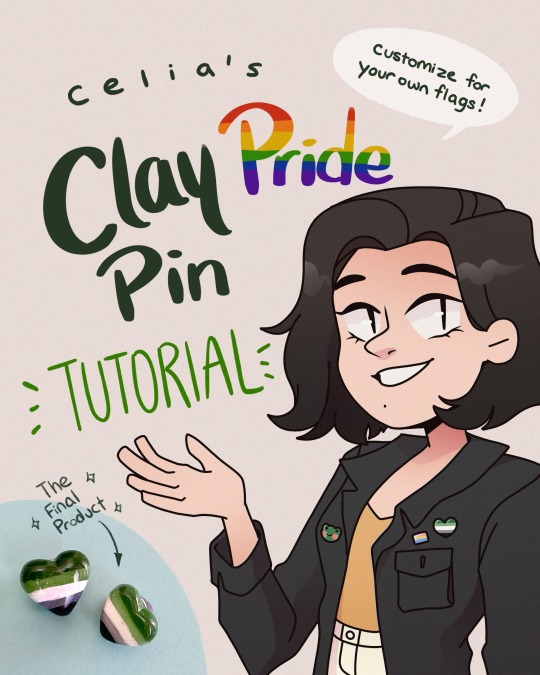


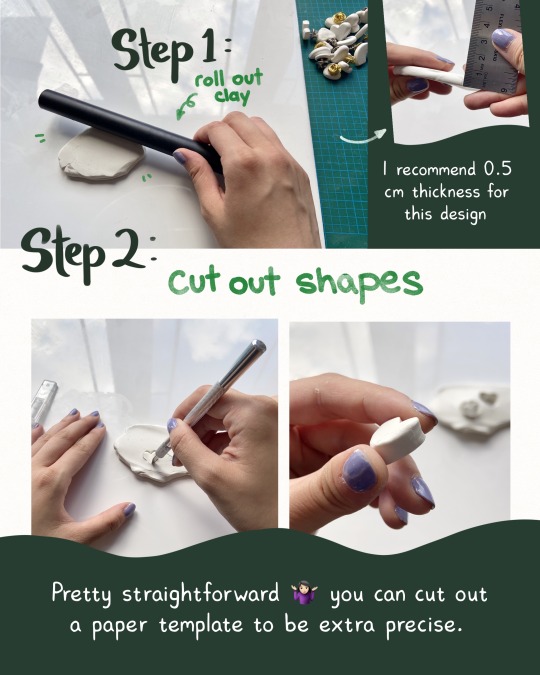
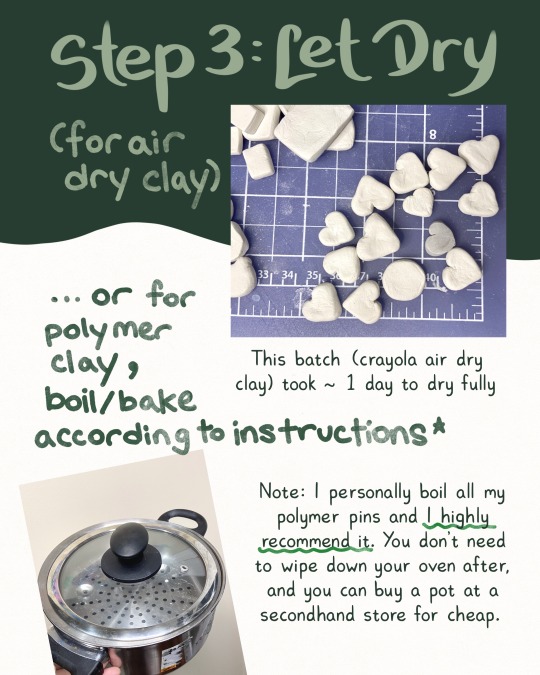



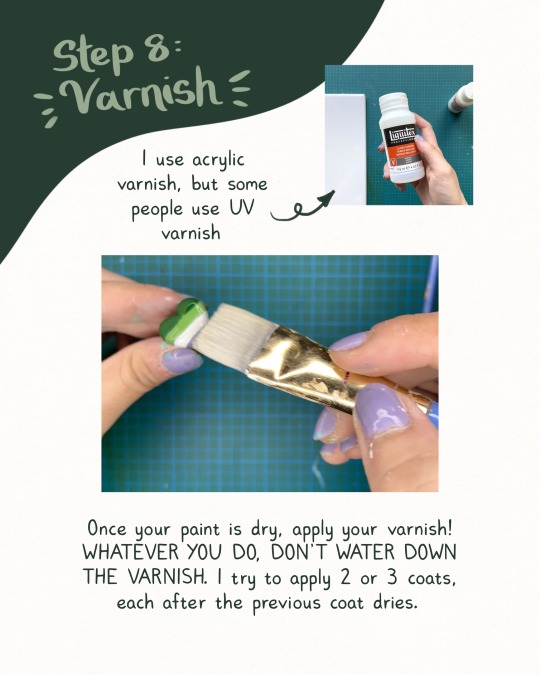

A fun and (hopefully) straightforward tutorial on how I make my clay pride pins! The reason I made this tutorial is becuase I know how hard it is to find pride merch sometimes, given costs of buying from stores online and shipping too (I’ve heard one too many horror stories of customs fees when buying from the states) If you’re in a position like that, or if for whatever reason you just can’t buy pride themed items, you can still make your own in a really subtle way! It’s also a great craft if you want to make a few extra pins while you’re at it for friends ✨
On my notes from the tutorial itself:
Sandpaper - Personally, I have a lot of sanding tools because of my degree, but by no means do you need to have all the bells and whistles to be able to make pins! You can definitely get some sandpaper from the dollar store or similar places if you or nobody you know has any. But, if you are like me and value *craftsmanship* I’d totally recommend getting a dremel or small files if you have them/can borrow, and really go to town on sanding down the pins. It’s not the end of the world if you don’t, but you can get a REALLY smooth, rounded form that looks fantastic.
Paint - Again, it’s one of those things where if you have the nice stuff (acryla gouache), that’s fantastic, but you definitely don’t need to go out and spend a lot of money on it! You can buy a far cheaper and still REALLY good crafter’s acrylic at most craft stores, or even the dolalr store. They’re generally a dollar or two for a bottle, and you really only need black/white plus the basic colours in your flag.
Alright that’s it, if you’re somehow still reading I hope you like it! Let me know if you have questions, I’ll do my best to answer!! And I’ll be back next week with the usual stuff
[Image Description:
Slide 1: Cover Slide. Title reads: “Celia’s Clay Pride Pin Tutorial”. Celia is pictured wearing a black jean jacket adorned with heart shaped pan and aro pins, as well as a frog. She gestures to the title, and she says “Customize for your own flags!”. In the corner is a photo of the pins in real life, with a note that says “The final product”.
Slide 2: [Note: All of the tutorial from here on out might be a bit text heavy, so I will paste the original script with necessary descriptions]
About & Materials:
About - “This Tutorial is aimed specifically at making heart shaped pins for collars! You can of course adapt the info here to create pins of your own design too”
What you will need:
- Clay - either air dry or polymer can work. If you only want to make a few pins I recommend finding a small pack of polymer on sale (about two dollars canadian).
- A smooth surface - I’m using a tile
- A roller - not for food, you can use a cardboard tube in a pinch
- A knife/sharp edge
- Superglue
- Pin Backings
- Sandpaper (note: please check description for more thoughts)
- Paint - acrylic gouache, see description for cheaper alternatives
- Paintbrushes
- Gesso and Acrylic varnish
In the bottom right a picture of most of these materials, save for the gesso and acrylic varnish, are pictured.
Slide 3: Steps, an Overview
- Roll out your clay
- Cut out desired shape
- Let dry/bake/boil
- Sand! (the word sand is written out again, spaced out, for dramatic effect)
- Glue backing
- Gesso
- Paint your flag!
- Varnish/Let Dry!
Slide 4: Step 1: Roll out clay [A photo of Celia rolling out the clay, with an accompanying photo showing her measuring the slab she rolls out. It is 0.5 cm thick]. “I recommend using 0.5 cm thickness for this design”
Step 2: Cut out shapes [Photo of celia cutting out heart shape with an exacto knife, then her holding up the finished heart shape to show viewer]. “Pretty straightforward [shrug emoji] you can cut out a paper template to be extra precise”
Slide 5: Step 3: Let dry (for air dry clay) [A picture of dried air dry clay hearts made from crayola brand air dry clay is shown; it apparently took around 1 day to dry]
… or for polymer clay, boil/bake according to instructions.
A note from Celia: I personally boil all my polymer pins and I highly recommend it. You don’t need to wipe down your oven after, and you can buy a pot specifically for this purpose for cheap from a secondhand store.
Slide 6: Step 4: Sand!
A few pictures of Celia sanding down the pins are shown. Her process is 1) And down the front/back to smooth, then rounding down the sides with a file and sandpaper.
Text: “… I could ramble a lot about sanding [sweat drop emoji], but I’ll spare y’all the rant. Just smooth down any imperfections to get a shape you like, I recommend 220 grit sandpaper. If you have some files, or a dremel, use them!”
Slide 7: Steps 5 and 6: Glue pin backing and Gesso (… pretty self explanatory).
A series of photos showing Celia gluing down the pin backing to a sanded pin, then her holding the pin with said backing as she applies gesso.
Slide 8: Step 7: Paint! A few photos showing Celia with a blank pin and some aro flag colours mixed out, then another photo showing her applying the paint to the pin.
Text: “Now paint your desired flag! I recommend doing the top and bottom stripes a bit thicker, if only so they look proportional from the front.È
Slide 9: Step 8: Varnish
A photo of Celia holding up a bottle of liquitex gloss varnish, and a note pointing to it that says I use acrylic varnish, but some people use UV varnish.
Another photo of Celia applying varnish to a pin. Text says: “Once your paint is dry, apply your varnish! Whatever you do, don’t water down the varnish. I try to apply 2 to 3 coats, after each previous coat dries.”
Slide 10: … and you’re done!
A photo of Celia wearing the pins in real life on a jean jacket. She has a pan and aro pin, and on the other side an aro flag painted on a rainbow shape.
(I’ll delete this later, but thank you to everyone who’s commented/reblogged on What is Love - and my other posts too haha ;A; I’m not 100% sure exactly what you’re supposed to do with responding to comments on this site, it’s been years since I’ve last used tumblr but just know I have read everything and hearing how y’all felt really warms my heart/has made my day <3)
(I’m probably just overthinking this, lol - but thought I’d throw this out here for context: Just logged back in after a bit, I think I’ve seen a few of my comics being reblogged with the asexual hashtag. I’m not bothered by this but please keep in mind I am not asexual, I’m allosexual, and none of my comics are being told from an ace viewpoint!)
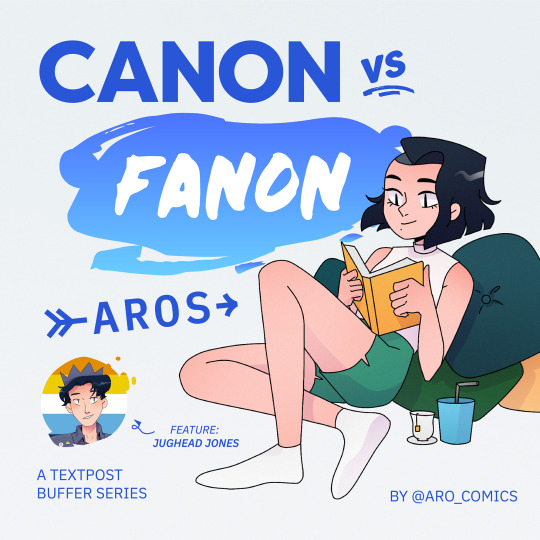
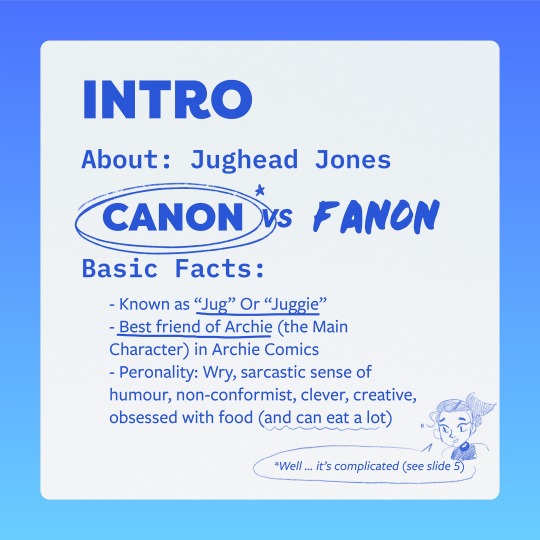

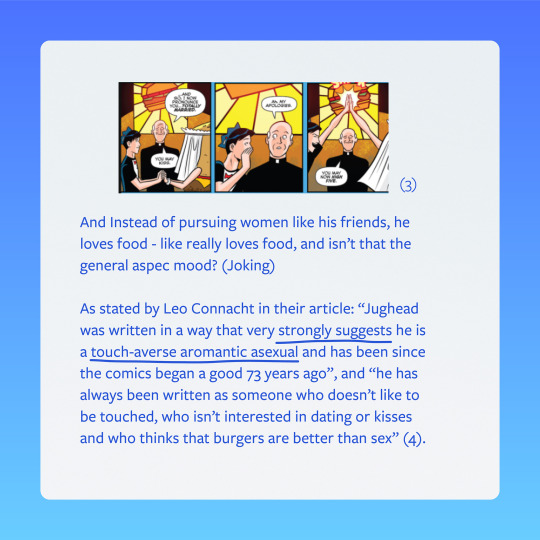
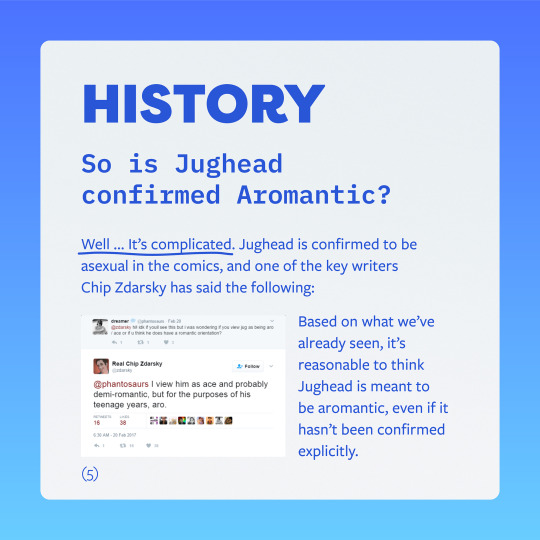



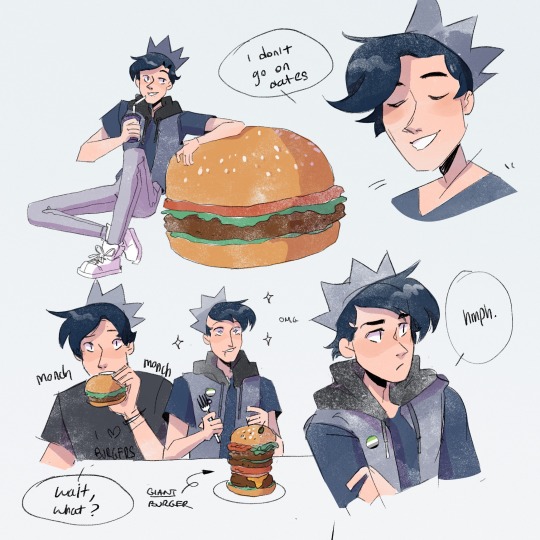
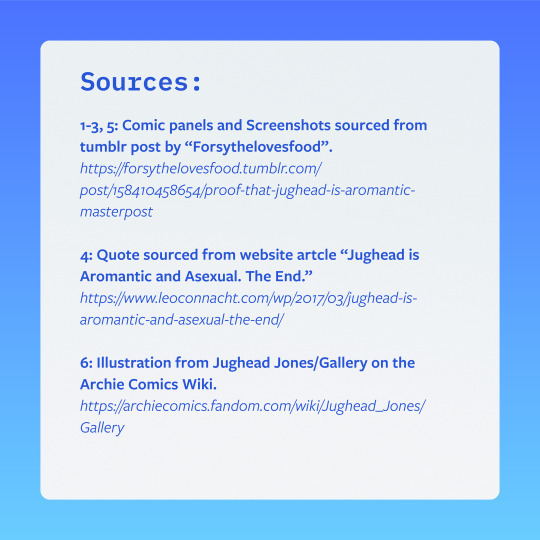
Happy Pride friends!!! ️❤️This is the surprise I referenced last week!! I’ve been really meaning to do some more analysis of media (since it is one of my favourite rant topics with my friends), and I wanted to combine it with experimenting with my art/this account, so I hope y'all like the nerdy analytical textposts lol If it’s not your cup of tea/what you followed me for, don’t worry, I’ll be going back to my regular content next week. I’ll only be posting these textposts every now and then, probably to give myself a bit of a break between longer comics
More about this series though - I wanted to take a more in depth approach to discussing how we consider arospec characters by not only discussing the facts that we already know but also the nuance and meaning behind their representation. Let me know what you think, and if there’s anything I’m you’d like to see more of analysis if I were to continue this series (I actually have two more already made so the suggestions will have to apply after those though). Also, for this particular post, I really want to emphasize that a good portion of my research as well as screenshots were sourced from the tumblr user Forsythelovesfood’s masterpost, so please go check them out!!!
How do y'all feel about Jughead’s character in the comics? Does the representation in the Show That Shall Not Be Named boil your blood too?? And are y'all planning on wearing paper crowns too??
[Image Description:
Slide 1: Title slide. Text says: “Canon Vs Fanon Aros, feature: Jughead Jones.” The title shows a drawing of Celia sitting and reading a book, relaxing. Bottom text says “a textpost buffer series” and by “aro comics (the Instagram username)”
Slide 2: Note: For the following slides, information is quite text heavy. As a result the original script written will be pasted here with additions of any visual notes if needed.
Slide: About: Jughead Jones
Canon vs. Fanon – Circle Canon, but note says “well … it’s complicated (see slide 5”
Basic facts:
Also known as “Jug” or “Juggie”
Best friend of Archie (MC) in Archie Comics
Personality: Wry, Sarcastic sense of humour, a non-conformist, clever & creative, obsessed with food (and can eat a lot)
Slide 3:
Slide title: History
What Makes Jughead an Aro Icon?
The fact that he’s canonically (in the comics, anyway) uninterested in women , touch-averse, confused about his friend’s romantic exploits.
2 Screenshots: (1) where betty is making an advance on jughead, trying to hug him: “do you realize this is the way some great romances are started?”. He turns her down by saying “and it could be that way with us too, betty … if only I liked girls!”, as he walks away.
Screenshot (2) shows random girl trying to hug jughead: “Jughead’s a hero!”. Jughead is visibly uncomfortable and trying to get her off: “Uh yeah, but like a lone wolf hero that doesn’t like to be touched.”
Slide 4: (continued from last slide)
Screenshot (3) shows shows comic strip of jughead holding hands with a bride dressed as a hamburger. Priest says that they are now pronounced married, and may kiss. Jughead whispers to him and speech bubble shows him saying
“ah, my apologies”, and he corrects himself the next panel and says “you may now high five” as the couple high fives.
And Instead of pursuing women like his friends, he loves food - like really loves food, and isn’t that the general aspec mood? (Joking)
As said by Leo Connacht in their article: “Jughead was written in a way that very strongly suggests he is a touch-averse aromantic asexual and has been since the comics began a good 73 years ago”, and “he has always been written as someone who doesn’t like to be touched, who isn’t interested in dating or kisses and who thinks that burgers are better than sex” (4)
Slide 5: Slide title: History
So is Jughead confirmed to be aromantic?
Answer: Well … It’s complicated. Jughead is confirmed to be asexual in the comics [insert relevant screenshot], and one of the key writers Chip Zdsarsky has said the following:
[Screenshot]: Shows twitter interaction. Someone asks the author “
Hi! I don’t know if you’ll see this but I was wondering if you view jug as being aro/ace or if you think he does have a romantic orientation?”
(Celia’s note: text was typed to be readable to screenreader, also being aromantic is a romantic orientation and not characterized as a lack thereof). Chip Zdarsky resonds:
“I view him as ace and probably demi-romantic, but for the purposes of his teenage years, aro.”
Based on what we’ve already seen about his characterization, I believe it’d be accurate to say that Jughead is meant to be a canonically aromantic character, even if it hasn’t been confirmed explicitly.
Slide 6: Slide title: Conclusion
Why is Jughead’s existence as a canonically ace, and implied aro character really important?
Our identities are rarely portrayed in media, and much less so in a positive light.
Something known as “aro-coding” villains (in which villains are portrayed as evil due to their lack of love, or are more humanized somehow by the presence of romantic love) is generally the only times we see ourselves represented.
Slide 7: (Continued from previous slide)
Obviously, this is harmful to our perception of our identities and our self-esteem – which is why getting the chance to see ourselves as a main character who isn’t a bad person, and liked by his friends/community is good!
On top of this, he’s one of the only characters within a well known franchise with a longer history that has been so explicitly written as aromantic (though things are changing now), making him an icon of sorts within our community!
Slide 8: Slide title: Bonus
Fun fact – in honour of his crown shaped button beanie hat (yes I was surprised to find out it was a beanie too), aros have started to wear paper crowns/use paper crowns as a symbol for our community!
Doodles below show Celia wearing a paper crown and gesturing at some tape, scissors and paper. She says
“A fun and easy DIY!”. A note scrawled near the top says that there are more sketches on the next slide.
Slide 9: Slide of sketches of Jughead. He sits next to a giant burger costume sipping a soda on the top left, and on the top right he is drawn shrugging with a text bubble saying “I don’t go on dates”. On the bottom left are two sketches of him eating burgers. Far left is him munching on a burger and saying “wait, what?” While middle is him about to eat a very tall burger (and being mesmerized by it). On the bottom right is him standing and staring off to the side saying “hmph”
Slide 10: Slide title: Sources
[Note: I have pasted the sources here as they are displayed in the original slide. If you would like me to send the links to you please DM me and I will do my best to respond in a timely manner]
1-3, 5: Comic panels and Screenshots sourced from tumblr post by “Forsythelovesfood”.
https://forsythelovesfood.tumblr.com/post/158410458654/proof-that-jughead-is-aromantic-masterpost
4: Quote sourced from website artcle “Jughead is Aromantic and Asexual. The End.”
https://www.leoconnacht.com/wp/2017/03/jughead-is-aromantic-and-asexual-the-end/
6: Illustration from Jughead Jones/Gallery on the Archie Comics Wiki.
Paladins are champions of their God’s divine will, fearsome holy warriors, they are usually lawful good. Woe be to you if you find a paladin of a more sinister deity! 8th of my ‘Fantasy class bear’ series, funded by my amazin pαтяσиs over a year ago!
Post link
Bear with me while I do my monthly selfpromo! Red Pandas may not be bears like Giant Pandas, but close enough! I had to do a fanart for Turning Red since I loved the movie so much Consider supporting if you have the means & want to see this + multiple years of exclusives!
See the artwork here: https://www.patreon.com/posts/wah-65834595
Post link
Rangers move with finesse through forest & fen. Master marksmen, trackers & animal handlers. This sloth bear & his owl companion have seen it all! 7th of my ‘Fantasy class bear’ series, funded by my amazin pαтяσиs over a year ago!
Wanna see more artwork like these? Consider tossing me $1 per comic: https://www.patreon.com/TheBearMinimum
Post link
Always facilitating the creation of more bear characters now I have a full ref sheet base up on my Kawfi-shawp! get your burr design fursuit ready or just updated in a semi-cartoony style https://ko-fi.com/s/9d49a118d1
Post link

